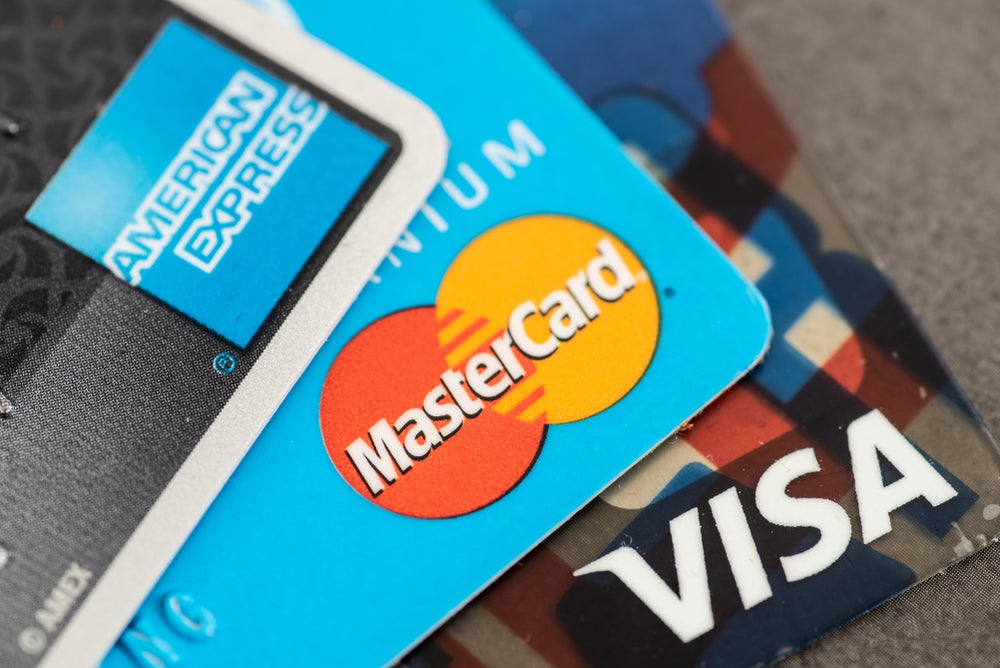effective card marketing and differentiation strategy.
Jason McNutt, a consultant at First Annapolis
Consulting, looks at how co-branding has evolved and how issuers
can reap the benefits.
Co-branding in the general-purpose credit card industry is not a
new phenomenon. The US credit industry has effectively used
co-branding for approximately two decades, and this market
continues to be highly competitive. As standard upscale card types
(gold, platinum, etc) became increasingly commoditised in the
consumer’s mind and annual fees became less prevalent, US issuers
found that co-branding offered unique product differentiation and
productive acquisition channels. Co-branding increased card sales,
and thus revenues, by providing issuers with many new levers to
pull, such as unique customer value propositions, expanded
distribution channels, and, of course, the brand appeal of the
partner.
Increasingly, co-branding is becoming global, usually led by
experienced multinational issuers and then later by local players.
Regardless of issuer size, there are some key concerns both the
bank and its potential partner need to evaluate before entering
into a co-brand relationship.
Co-branding benefits
The benefits of co-branding come with increased costs and business
complexity, therefore issuers in less developed card markets are
often slower to embrace the co-branded model as they choose to
acquire accounts through lower-cost channels such as the branch
network. Some of an issuer’s additional brand-related costs in the
co-brand business model are new account bounties, a share of
interchange revenue generated from sales volumes, guaranteed
marketing spending, and in some cases profit sharing. Deal terms
vary widely and are dependent on the country-specific factors as
well as the brand value of the potential partner and its
distribution network.
With bounties per new account varying widely and royalties
calculated as basis points of purchase volumes (depending on
domestic interchange rates, among other factors), it is not
surprising that many domestic issuers opt to leverage their often
less expensive branch channel. However, as banks deeply penetrate
their customer base and card products become more sophisticated,
co-branding becomes a more attractive option. These co-brand
attractive markets are generally more saturated on a per capita
basis and therefore issuers look for additional ways to get their
product into the hands of consumers.
How well do you really know your competitors?
Access the most comprehensive Company Profiles on the market, powered by GlobalData. Save hours of research. Gain competitive edge.

Thank you!
Your download email will arrive shortly
Not ready to buy yet? Download a free sample
We are confident about the unique quality of our Company Profiles. However, we want you to make the most beneficial decision for your business, so we offer a free sample that you can download by submitting the below form
By GlobalDataThese players often realise that co-brand programmes, and airline
programmes in particular, attract more loyal and engaged
cardholders, thus generating favourable economics compared to
proprietary portfolios. Co-branding can also be an attractive
option for players that do not have a strong branch presence, such
as multinationals entering a new market, and direct banks using
non-traditional methods of customer contact, such as the
internet.
Earlier this year, France’s Groupement des Cartes Bancaires decided
to open up the country’s co-branding credit market, which had been
limited due to regulations forbidding members from co-branding.
This development creates an opportunity for various players in the
French general-purpose credit card market to grow, especially in
regions of the country where a bank may not have a strong branch
presence. While this change provides new marketing channels for
local players, it may create an even larger window for
multinationals to move into the French general-purpose credit card
market, or to expand an existing presence. It remains to be seen
how the French market will develop, but it is likely that even if
they do not win the deals, global credit card issuers will bid and
influence the market.
Large multinational issuers continue to push into new markets,
often touting the diversity and reach of their businesses.
Citigroup and HSBC operate credit card businesses in dozens of
countries globally and continue to look to move into new markets.
GE Money indicates that 75 percent of its net income is derived
outside of the US, with operations in 55 countries. Often these and
other multinationals prefer to expand into new countries by
directly acquiring local banks or participating in a joint venture.
The choice of with whom to co-brand is a key consideration when a
multinational opts for an organic growth model.
Economics, execution and strategic fit
As mentioned previously, for multinationals in markets with limited
branch presence or attempting to launch a de novo card programme, a
co-branded programme offers an attractive solution. In these cases,
the issuer is looking to leverage its partner’s sales channels and
brand value. For the potential partner in these cases, its primary
concern is how a card programme can expand their business, increase
revenues, or add a unique customer experience. Local banks also
take an interest in key potential partners in their market as they
attempt to grow their business. The negotiations often boil down to
three key areas: economics, execution and strategic fit.
While the economics of a deal are hugely important, it is often the
other two legs of the stool that can really give a large,
experienced player the upper hand at the negotiating table. In
well-developed markets, economies of scale favour the larger
players, enabling them to sweeten deal economics. However, as a
large multinational issuer enters a new market, these cost benefits
may be muted, and therefore the cost advantage may not reside with
the new entrant versus domestic players. Improved portfolio
performance expectations can swing the economic pendulum back in a
multinational’s favour as their outlook will often be more
confident.
Execution experience is what gives a global bank the confidence to
forecast significantly higher growth rates. Often it is incumbent
upon the financial institution to educate their potential partner
with regards to the details of running a credit card programme.
Therefore, a large global issuer who successfully operates co-brand
programmes in numerous countries can generally offer a greater
degree of comfort to a would-be partner that they have the
experience to effectively manage the portfolio. While local market
knowledge is important and is not to be underestimated, large
external players have a tremendous well of knowledge from which to
draw. This may be in the form of improved portfolio management
techniques, world class analytics, product innovation, or
potentially all three.
The ability to execute and to help partners meet strategic
objectives has led to global issuers signing multi-country deals
with global partners. Citigroup’s global deal with Shell, RBS’s
deal with Tesco and GE’s deal with Wal-Mart offer a glimpse of what
the future may hold. These partnerships are examples of a larger
trend in which issuers partner in multiple jurisdictions with the
same counterpart under one global contract or by signing individual
deals in each country. Often these relationships are built over
time, based on the issuer’s continued ability to assist a partner
in building a successful co-brand programme that expands both
parties businesses and revenues.
Multi-country deals between two large multi-jurisdictional players
offer the would-be partners many advantages. One of the key
advantages is the resultant cost savings that may be realised.
Management can leverage contract language and deal terms from
either a global contract or other jurisdictions and therefore
shorten the time spent in negotiations. Additionally, a central
management team should be able to leverage learnings from various
jurisdictions and more quickly develop solutions to issues. From an
operational perspective, large deals can facilitate an issuer in
growing to scale more quickly. Programming and technological
innovations can be transferred quickly and vendor pricing can be
reduced based on the economies of scale. One ‘X’ factor is trust
between the two parties. With increased trust, the parties will
allow each other the latitude to make decisions more quickly and
limit bureaucratic processes.
Strategic fit is the third leg of the stool and also relies on a
perceived level of trust, which often tips the balance in favour of
the global banks. For a retailer, airline or other potential
partner, it is important that the potential issuer has the same
goals in mind for their customers as they do. Can the partner bring
a unique product offering that differentiates their current
business model and gives them an edge? Will cross-selling
additional financial products also appeal to their client base and
therefore drive more revenue back the partner? While the partner
wishes to generate a positive return from the card programme, the
issuer should bear in mind that the partner is looking for
something that is going to drive deeper customer loyalty and
therefore improve its core business.
Another aspect of strategic fit is the ability of the retailer,
airline, etc, to increase its brand equity by partnering with a
well-perceived financial brand that may also give their brand a
boost. Both American Express and Diners Club have numerous co-brand
deals in many countries in Europe, either as a direct issuer or as
a network. These brands can instil a sense of exclusivity, which
again builds a sense of brand loyalty. This fit goes both ways as
an issuer also wants to pick a partner whose brand will improve
their image with the consumer marketplace.
When it comes to strategic fit, global banks often provide an air
of prestige in the local market and can offer a number of unique
products and services that smaller local players may find difficult
to match. If the potential partner has aspirations to expand beyond
their borders, it will be important that its issuer can assist them
along the way. This can be an even bigger advantage for
multinational agreements. Large multinational corporations and
banks immediately share a common ground and usually face similar
challenges. The experience of solving problems in multiple
locations can build inter-personal equity and trust, leading to
further expansion of the partnership.
Advantage of being local
It is not all doom and gloom for the local players in the co-brand
space. Barclaycard in the US (formerly Juniper) is an excellent
example of how a smaller issuer can grow in a market dominated by
large issuers. For all the advantages large experienced players
have, they have some disadvantages as well. One key disadvantage is
often the inability to provide all partners with the level of
service and attention they expect. While large multi-country
issuing relationships can focus management’s attention, they can
also detract from smaller relationships or keep deal teams occupied
for long stretches. Some global players have a culture of
cultivating many smaller partners, but most do not. This area gives
local players an upper hand if they can convince their counterparts
that they are a key client.
Another inherent advantage local players have over their global
brethren is the market knowledge mentioned earlier. Deeper
understanding of their market may allow a local issuer to cultivate
a number of in-country co-brands with sports teams, petroleum
retailers, etc. Local players that embrace co-branding and act
quickly to approach key targets in their home market are better
positioned to win future deals.
Additionally, understanding the advantages and disadvantages of
particular multinationals will further position the smaller players
to be effective in this space. From this initial base of
relationships, the local issuer can develop a base of experience
required to win larger relationships in the future.
Communication is key
It should also be noted that successful programmes are not created
by an issuer in a vacuum. Both parties need to work together to
create a product that meets the needs of an agreed-upon target
audience and creates reasonable returns for both entities.
Ultimately, it is communication between the two organisations that
identifies these issues early and allows the players to solve the
problems before the deal falls apart. More often then not, a
breakdown in communications, evidenced by unmet expectations, is
the main cause of deal participants going separate ways.
When evaluating a deal, both the partner and the issuer should ask
themselves a few key questions: if the customer behaves in the
fashion we desire, do both parties benefit financially? Can both
parties meet the technical and operational requirements necessary
to meet the timelines without unexpected costs? Is either party
likely to change business direction in the foreseeable future that
would jeopardise the relationship? Do our upper management teams
work well together and view each other as competent business
people? If both parties have asked themselves the preceding
questions during due diligence, they should be in a position to
decide who the best partner or partners will work for them.
As markets develop further and competition increases, co-branding
is likely to become an increasingly important channel for credit
card issuers to acquire new accounts. As more retailers choose to
expand into multiple markets, it is likely that many will be
initially inclined to expand their credit businesses with a large
global player.
However, as local banks recognise the value of these relationships
in growing their business, and they develop local expertise, they
may be able to successfully bid on the pending plethora of co-brand
requests for proposals.







